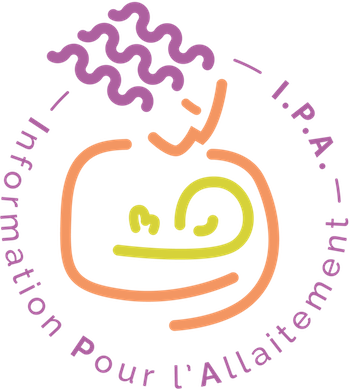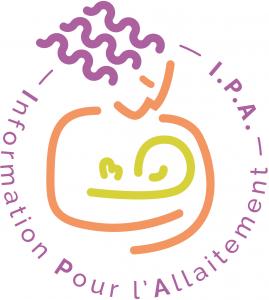Catégories
Documents disponibles dans cette catégorie (47)
 Ajouter le résultat dans votre panier Faire une suggestion Affiner la recherche
Ajouter le résultat dans votre panier Faire une suggestion Affiner la rechercheBulletin : texte imprimé
Les Dossiers de l'Allaitement, n°154 - Janvier 2020
La Leche league France, Auteur | 2020SOMMAIRE Cas cliniques p.1 Allaitement du bébé souffrant de diabète de type 1 p.1 Absence de transmission du virus Zika chez un enfant allaité p.3 Traitement d’un psoriasis chez une femme pendant la grossesse et l’allaitement p.4 Le dossi[...]Article : texte imprimé
Rachel Buffin, Auteur ; Pierre Pradat, Auteur ; Jocelyne Trompette, Auteur |Background: Holder pasteurization is the most commonly used technique in milk banks worldwide, but higher temperatures and longer pasteurization time have been associated with damage to the immune components of human milk. Research aim: Thi[...]Article : texte imprimé
Claudio Rodríguez-Camejo, Auteur ; Arturo Puyol, Auteur ; Laura Fazio, Auteur |Background: When feeding preterm infants, donor milk is preferred if the mother’s own milk is unavailable. Pasteurization may have detrimental effects on bioactivity, but more information is needed about its effects on the immunological compoun[...]Article : texte imprimé
Sera Young, Auteur ; Sebalda Leshabari, Auteur ; Chaele Arkfeld, Auteur |Background: For the past decade, heat-treating breastmilk has been an infant feeding option recommended by the World Health Organization as a strategy to reduce vertical transmission. However, little is known about field experiences with it. Our[...]Article : texte imprimé
Jennifer C. Hartle, Auteur ; Ronald S. Cohen, Auteur ; Pauline Sakamoto, Auteur |Background: Environmental contaminants ranging from legacy chemicals like p,p’-dichlorodiphenyltrichloroethane (DDT) to emerging chemicals like phthalates are ubiquitous. Research aims/questions: This research aims to examine the presence a[...]Article : texte imprimé
Laura Meredith-Dennis, Auteur ; Gege Xu, Auteur ; Elisha Goonatilleke, Auteur |Background: When human milk is unavailable, banked milk is recommended for feeding premature infants. Milk banks use processes to eliminate pathogens; however, variability among methods exists. Research aim: The aim of this study was to com[...]Article : texte imprimé
Maureen Groer, Auteur ; Allyson Duffy, Auteur ; Shannon Morse, Auteur |Background: There has been a recent increase in availability of banked donor milk for feeding of preterm infants. This milk is pooled from donations to milk banks from carefully screened lactating women. The milk is then pasteurized by the Hold[...]Article : texte imprimé
Mageshree Naicker, Auteur ; Anna Coutsoudis, Auteur ; Kiersten Israel-Ballard, Auteur |Human milk provides crucial nutrition and immunologic protection for infants. When a mother's own milk is unavailable, donated human milk, pasteurized to destroy bacteria and viruses, is a lifesaving replacement. Flash-heat pasteurization is a s[...]Article : texte imprimé
Kaitlin H. Drouin, Auteur ; Jennifer F. Riley, Auteur ; Charis Benjamin, Auteur ; Katherine E. Gregory, Auteur ; Sarbattama Sen, Auteur ; Mandy Brown Belfort, Auteur |Background and Objectives: Providing pasteurized donor human milk (DHM) to healthy newborns is an emerging practice. The content of hospital policies that govern this practice is unknown. Materials and Methods: We collected policies from 15 N[...]Article : texte imprimé
Erin Hamilton Spence, Auteur ; Monica Huff, Auteur ; Karen Shattuck, Auteur |Background: Potential donors of human milk are screened for Ebola virus (EBOV) using standard questions, but testing for EBOV and Marburg virus (MARV) is not part of routine serological testing performed by milk banks. Research aim: This st[...]Article : document cartographique imprimé
David J. Rechtman, Auteur ; Martin L. Lee, Auteur ; H. Berg, Auteur |"As a result of concerns over the transmission of infectious diseases by donor milk, as well as the possible loss of nutritional value of donor milk through exposure to a variety of environmental conditions, the practice in the United States has[...]Article : texte imprimé
Brodie Daniels, Auteur ; Penny Reimers, Auteur ; Tracy King, Auteur |Introduction: PiAstra is a simulated flash-heat (FH) pasteurization temperature monitoring system designed using Raspberry Pi technology for the pasteurization of human milk. This study analyzed the effect of the PiAstra FH method on human milk [...]Article : texte imprimé
Gerardo Arroyo, Auteur ; Kevin Alexander Ortiz Barrientos, Auteur ; Karla Lange, Auteur |Introduction: Human milk immune components are unique and important for the development of the newborn. Milk processing at the Human Milk Banks (HMB), however, causes partial destruction of immune proteins. The objective of this study was to det[...]Article : texte imprimé
Barbara E. Büttner, Auteur ; Cornelia M. Witthöft, Auteur ; Magnus Domellöf, Auteur |Background: Breastmilk is the recommended aliment for preterm infants. Milk banks provide donated breastmilk for the neonatal care of preterm infants when mother's own milk is not is available. To avoid pathogen transmission, donated breastmilk [...]

















